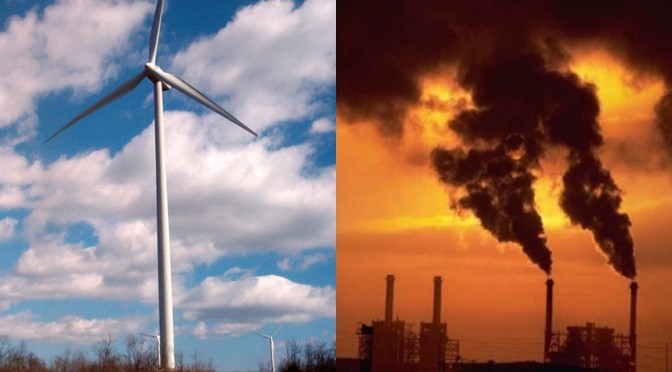This paper sets out a number of reasons why an integrated renewables –greenhouse gas – energy efficiency 2030 policy approach with an ambitious and binding renewable energy target yields more benefits for European citizens and industries than a one-legged policy based on a supposedly “technology-neutral” GHG-only approach.
Providing a clear signal for investors
By providing the necessary long-term predictability of market volumes and direction, a binding 2030 renewables target will decrease the costs of uncertainty while at the same time facilitating the achievement of the existing 2020 targets in the most efficient way.
Growing the economy
The 2020 energy and climate framework has made the renewable energy sector one of the most recession-resistant areas of European economy; renewable energy, energy efficiency and IC T are those sectors which have shown positive growth in the face of the crisis. In 2010, the renewable energy industry contributed
0.6% of the EU ´s GDP. The binding 20% renewable energy target will lead to a net GDP increase of 0.25% in comparison to a scenario with no renewables policies. By 2030 this could further increase to a minimum net GDP growth of 0.45%.
Reducing the costs of decarbonisation
Successful innovation and decarbonisation policy needs to provide both a “demand pull” (via markets created) and a “supply push” (via R&D) in order to develop a broad portfolio of environmentally friendly and competitive technologies. Renewable energy targets enable a timely scale-up of a wide set of renewable energy technologies, thereby reducing long-term decarbonisation costs and allowing the energy sector to drastically decarbonise by 2050.
Reducing the costs of financing
Investments in the energy sector have become significantly more difficult due to the uncertainty about the mid and long-term policy perspectives. Policies which ensure stability and predictability mitigate risk and increase the confidence of market actors. This in turn reduces the cost of capital and helps to unlock private investments.
Reducing the need for support mechanisms
Increasing the share of renewable energy by setting a 2030 target does not mean a continuation of existing support mechanisms for all renewable energy technologies. A coherent, stable and predictable 2030 framework, including an ambitious binding renewables target, will significantly minimise the costs of uncertainty, lowering the investment risk, reducing the costs of capital and hence the level of support needed. Post-2020 an increasing number of renewable energy technologies will be able to move away from existing support mechanisms into a fair and properly functioning energy market for electricity, heating & cooling and transport.
Enhancing EU technology leadership
Dedicated and binding policies for renewable energy helped the EU to establish a first-mover advantage in global markets and made it a front runner in renewable technology innovation. China, the U.S., South Korea, Japan, India, and the EU are engaged in a competition for technology leadership in tomorrow’s markets.
European policy-makers should ensure that the EU is fully equipped for this competition, even in times of austerity.
Replacing fossil fuel imports
In 2011, the EU ‘s combined trade deficit was €150 billion. At the same time the net import bill for fossil fuels to the EU amounted to €388 billion, more than 3% of EU GDP, and more than twice the trade deficit. Analysis shows that the EU´s fossil fuel demand can be reduced by about 550 Mtoe by 2030, representing approximately €370 billion. 9 This is equivalent to the total combined energy consumption of Belgium, Germany, Latvia, Poland, the UK and Spain.
Creating jobs
The EU renewables sector directly and indirectly employs more than 1.1 million people constituting 0.7% of the total EU workforce, an increase of 25% on the 2009 figure.
By 2020, 2.7 million people in the EU will be employed by the renewables sector. Ambitious 2030 renewable energy targets could result in 4.4 million jobs in the EU.
Protecting the environment
Renewable energy deployment is not just about reducing CO2 emissions: Renewables avoid or reduce emissions of air pollutants, such as methane, carbon monoxide, nitrous oxides (NO X), sulphur dioxide (SO2), and ozone as well as reduce water consumption, thermal pollution, waste and adverse impacts on soil.
Diversifying technology
Renewable energy technologies include a large number of different technical options, which can be used across the three energy sectors; a binding renewables target would therefore leave a wide and flexible choice for Member States to decide on their energy mix, both in terms of energy sectors and the technologies contributing in each of those sectors.
http://www.erec.org/fileadmin/erec_docs/Documents/Publications/EREC_Hat-trick2030_April2013.pdf


